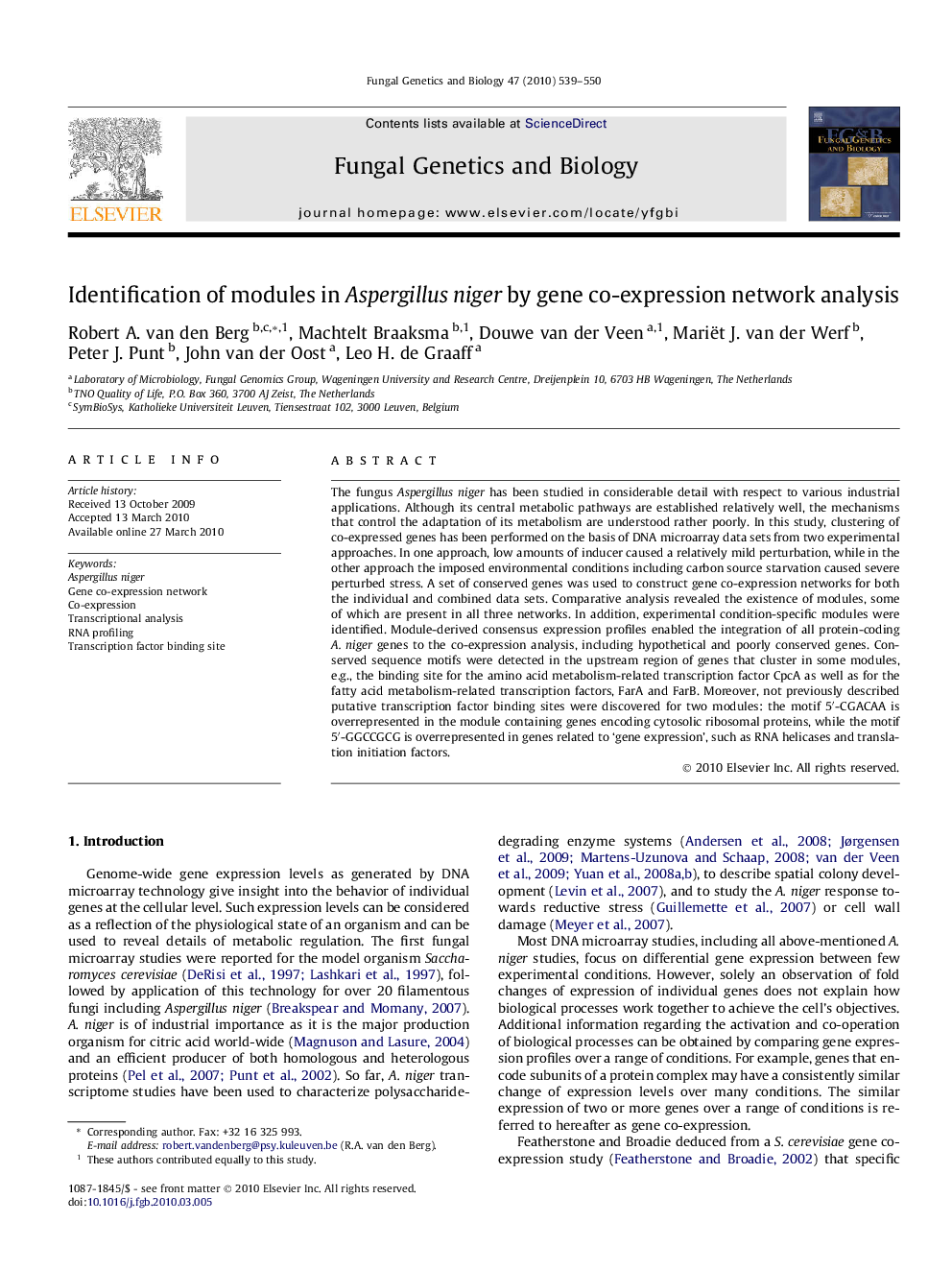| Article ID | Journal | Published Year | Pages | File Type |
|---|---|---|---|---|
| 2181085 | Fungal Genetics and Biology | 2010 | 12 Pages |
The fungus Aspergillus niger has been studied in considerable detail with respect to various industrial applications. Although its central metabolic pathways are established relatively well, the mechanisms that control the adaptation of its metabolism are understood rather poorly. In this study, clustering of co-expressed genes has been performed on the basis of DNA microarray data sets from two experimental approaches. In one approach, low amounts of inducer caused a relatively mild perturbation, while in the other approach the imposed environmental conditions including carbon source starvation caused severe perturbed stress. A set of conserved genes was used to construct gene co-expression networks for both the individual and combined data sets. Comparative analysis revealed the existence of modules, some of which are present in all three networks. In addition, experimental condition-specific modules were identified. Module-derived consensus expression profiles enabled the integration of all protein-coding A. niger genes to the co-expression analysis, including hypothetical and poorly conserved genes. Conserved sequence motifs were detected in the upstream region of genes that cluster in some modules, e.g., the binding site for the amino acid metabolism-related transcription factor CpcA as well as for the fatty acid metabolism-related transcription factors, FarA and FarB. Moreover, not previously described putative transcription factor binding sites were discovered for two modules: the motif 5′-CGACAA is overrepresented in the module containing genes encoding cytosolic ribosomal proteins, while the motif 5′-GGCCGCG is overrepresented in genes related to ‘gene expression’, such as RNA helicases and translation initiation factors.
